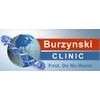
Chemotherapy With or Without Additional Chemotherapy and/or Radiation Therapy in Treating Children...
Childhood Lymphocyte-Depleted Classical Hodgkin LymphomaChildhood Mixed Cellularity Classical Hodgkin Lymphoma6 moreThis randomized phase III trial is studying different chemotherapy regimens given with or without radiation therapy to compare how well they work in treating children with newly diagnosed Hodgkin's disease. Drugs used in chemotherapy use different ways to stop cancer cells from dividing so they stop growing or die. Giving the drugs in different combinations may kill more cancer cells. Radiation therapy uses high-energy x-rays to damage cancer cells. It is not yet known if chemotherapy is more effective with or without additional chemotherapy and/or radiation therapy in treating Hodgkin's disease.

S0108 Bevacizumab in Treating Patients With Non-Hodgkin's Lymphoma
Anaplastic Large Cell LymphomaRecurrent Adult Burkitt Lymphoma2 morePhase II trial to study the effectiveness of bevacizumab in treating patients who have non-Hodgkin's lymphoma. Monoclonal antibodies such as bevacizumab may stop the growth of cancer by stopping blood flow to the tumor. Bevacizumab may be an effective treatment for non-Hodgkin's lymphoma

Monoclonal Antibody Therapy in Treating Patients With Refractory Anaplastic Large Cell Lymphoma...
LymphomaRATIONALE: Monoclonal antibodies can locate cancer cells and either kill them or deliver cancer-killing substances to them without harming normal cells. PURPOSE: Phase I trial to study the effectiveness of monoclonal antibody therapy in treating patients with refractory anaplastic large cell lymphoma or Hodgkin's lymphoma.

S9911, Combination Chemotherapy Plus Monoclonal Antibody Therapy in Treating Patients With Non-Hodgkin's...
LymphomaRATIONALE: Drugs used in chemotherapy use different ways to stop cancer cells from dividing so they stop growing or die. Combining more than one drug may kill more cancer cells. Monoclonal antibodies can locate cancer cells and either kill them or deliver cancer-killing substances to them without harming normal cells. PURPOSE: Phase II trial to study the effectiveness of combination chemotherapy followed by monoclonal antibody therapy in treating patients who have newly diagnosed follicular non-Hodgkin's lymphoma.

Antineoplaston Therapy in Treating Patients With Low-Grade Non-Hodgkin's Lymphoma
Low-Grade LymphomaCurrent therapies for Low-grade Non-Hodgkin's Lymphoma provide limited benefit to the patient. The anti-cancer properties of Antineoplaston therapy suggest that it may prove beneficial in the treatment of Low-grade Non-Hodgkin's Lymphoma. PURPOSE: This study is being performed to determine the effects (good and bad) that Antineoplaston therapy has on patients with Low-grade Non-Hodgkin's Lymphoma.

Denileukin Diftitox in Treating Patients With Non-Hodgkin's Lymphoma
LymphomaRATIONALE: Immunotoxins such as denileukin diftitox can locate cancer cells and kill them without harming normal cells. This may be an effective treatment for non-Hodgkin's lymphoma. PURPOSE: Phase II trial to study the effectiveness of denileukin diftitox in treating patients who have non-Hodgkin's lymphoma that has not responded to previous treatment.

Combination Chemotherapy in Treating Children With Non-Hodgkin's Lymphoma
LymphomaRATIONALE: Drugs used in chemotherapy use different ways to stop cancer cells from dividing so they stop growing or die. Combining more than one drug may kill more cancer cells. PURPOSE: Phase III trial to study the effectiveness of combination chemotherapy in treating children who have non-Hodgkin's lymphoma.

Genetic Testing Plus Irinotecan in Treating Patients With Solid Tumors or Lymphoma
AIDS-related Peripheral/Systemic LymphomaAIDS-related Primary CNS Lymphoma58 morePhase I trial to study genetic testing and the effectiveness of irinotecan in treating patients who have solid tumors and lymphoma. Drugs used in chemotherapy use different ways to stop cancer cells from dividing so they stop growing or die. Genetic testing for a specific enzyme may help doctors determine whether side effects from or response to chemotherapy are related to a person's genetic makeup

Vaccine Therapy Plus Sargramostim Following Chemotherapy in Previously Untreated Aggressive Non-Hodgkin's...
LymphomaRATIONALE: Drugs used in chemotherapy use different ways to stop cancer cells from dividing so they stop growing or die. Vaccines may make the body build an immune response to kill cancer cells. Colony-stimulating factors such as sargramostim may increase the number of immune cells found in bone marrow or peripheral blood and may help a person's immune system recover from the side effects of chemotherapy. PURPOSE: Phase II trial of vaccine therapy plus sargramostim following chemotherapy in treating patients who have previously untreated aggressive non-Hodgkin's lymphoma.

Liposomal Doxorubicin Plus Combination Chemotherapy in Treating Patients With AIDS-Associated Non-Hodgkin's...
LymphomaRATIONALE: Drugs used in chemotherapy use different ways to stop cancer cells from dividing so they stop growing or die. Combining more than one drug may kill more cancer cells. PURPOSE: Phase I trial to study the effectiveness of liposomal doxorubicin plus combination chemotherapy in treating patients who have AIDS-associated non-Hodgkin's lymphoma.
